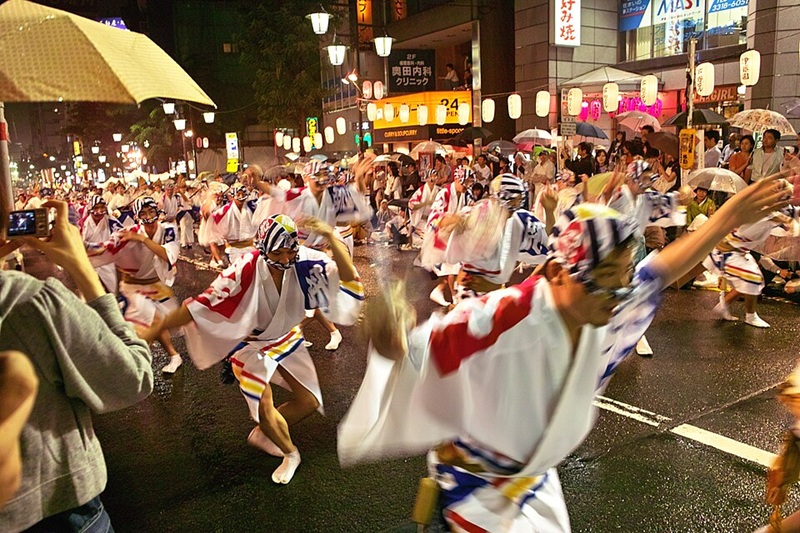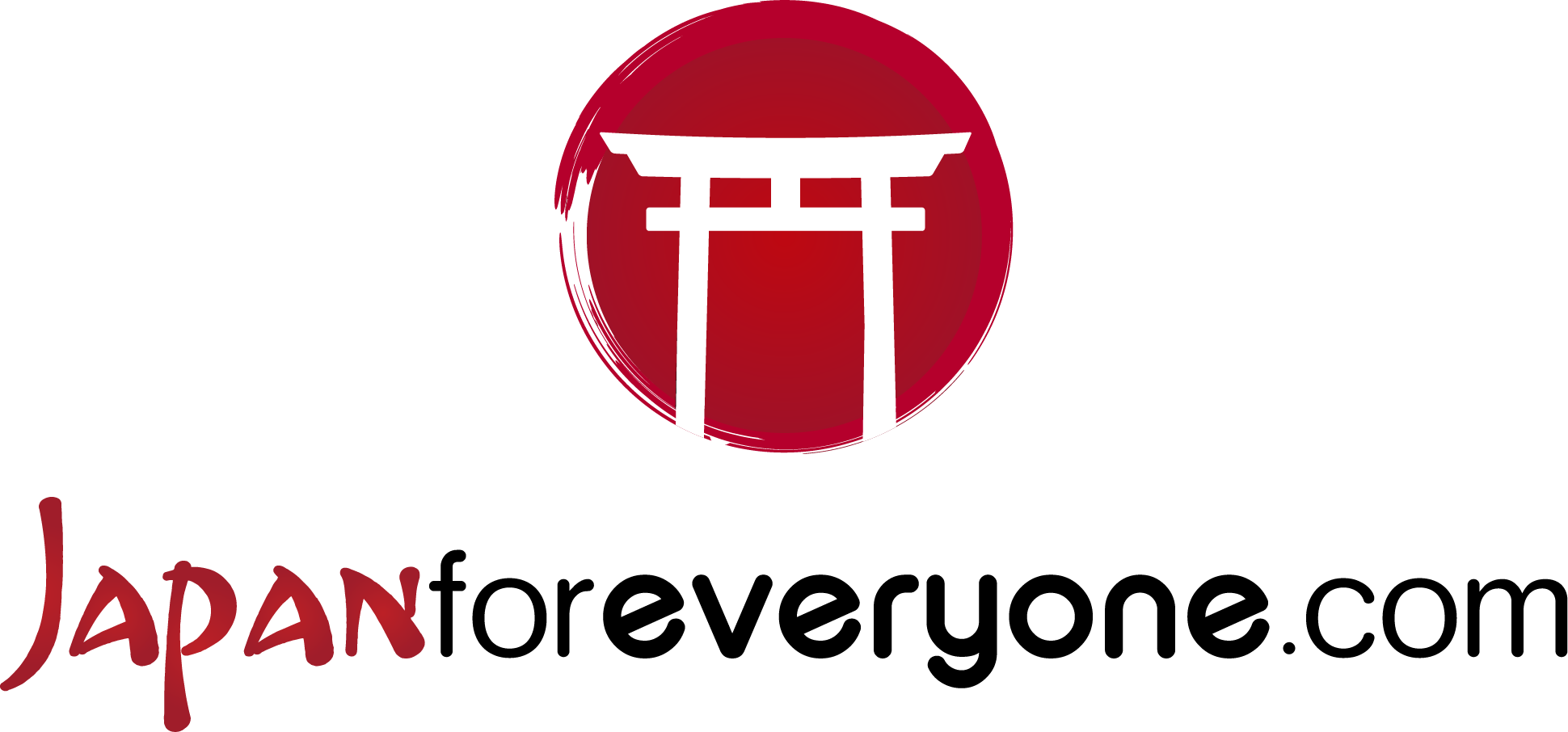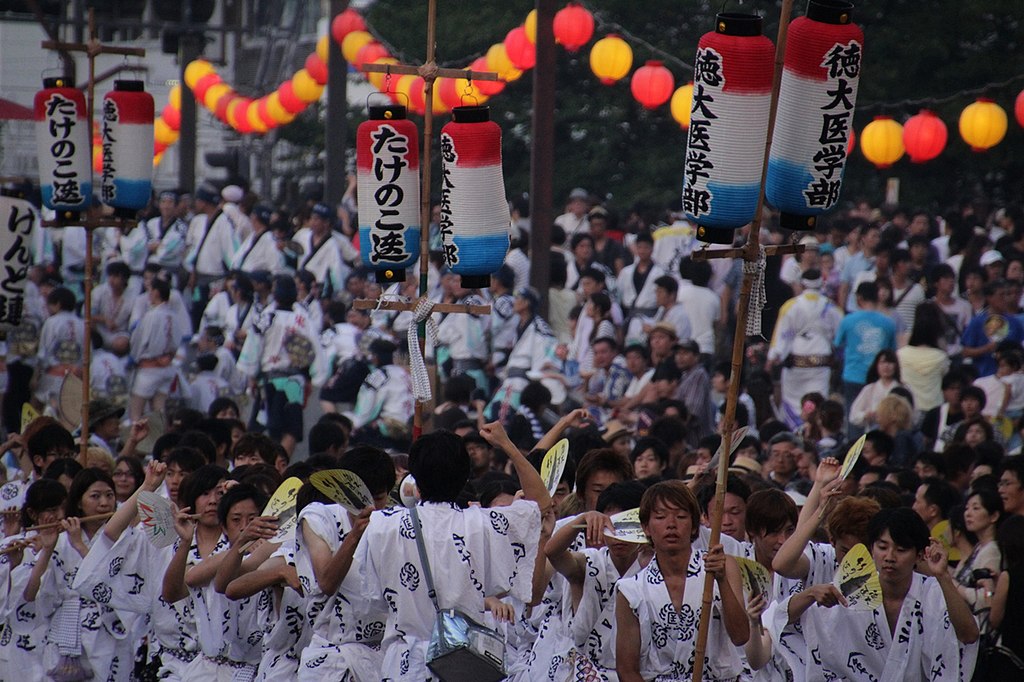Matsuri and Festivals in Japan
Matsuri (祭り) are traditional Japanese festivals, typically of Shinto origin, and each city preserves its own unique celebration. Usually, Matsuri are street parades involving thousands of people. There are also many types of Japanese food stalls; this atmosphere is typically Japanese and can mainly be experienced in summer.

Lucertola, Public domain, via Wikimedia Commons
What is a “Matsuri”?
A long time ago, Matsuri were sacred events: their original purpose was to “express gratitude to the spirits, the Kami,” and the word comes from Matsuru 祀る (to deify), meaning “to console the spirits through prayer.” It also refers to a rite derived from Shintoism and Buddhism involving the spirit known as Dochaku-shin (土着神), which has dwelled in a specific land since ancient times.
This tradition originated from a Japanese mythological story called Iwato-gakure (岩戸隠れ): the sun spirit, Amaterasuōkami (天照大神), hid inside a celestial cave called Amano-iwato (天岩戸), angry at her brother Susanoōmikoto (素戔嗚尊) for his cruelty. With the light gone from the land, all the spirits started a big celebration—dancing and singing—to draw Amaterasuōkami out. Thanks to their efforts, she emerged from the cave and light returned to the world. That celebration among the spirits is considered the origin of today’s Matsuri.
In the past, people maintained a close relationship with the Matsuri, showing gratitude to each spirit. However, during the Edo period (1603–1867), the Matsuri shifted from being sacred rituals to joyful events filled with traditional instruments and fireworks, spreading as “popular culture.” In the Meiji era (1868–1912), however, the government banned Matsuri through the Shinbutsu-bunri-rei (神仏分離令) decree, but after World War II, people revived the festival culture.
Traditional instruments and fireworks
( O- ) Mikoshi (神輿)
A Mikoshi is a portable Shinto shrine carried during Matsuri. The word is composed of:
“koshi (輿)”, meaning a sacred palanquin previously used by nobles;
“mi (神)”, referring to the spirit housed inside it.
During Matsuri, the spirit is temporarily placed in the Mikoshi. People pray to it for protection or blessings. Those carrying it wear a traditional outfit called Happi (法被). The charm lies in feeling the passion of the bearers. The Mikoshi is solidly built, resembling a shrine, and can weigh up to 100 kg—requiring strong cooperation.
Gorgo, Public domain, via Wikimedia Commons
Dashi (山車)
Like the Mikoshi, the Dashi is used to transport spirits, but it’s larger and on wheels, pulled by hand. Originally, it was shaped like a mountain to invite the spirits believed to descend from them (as the kanji “山” means mountain).
Thirteen-fri, CC BY-SA 3.0, via Wikimedia Commons
Hanabi (花火) / Fireworks
The Japanese word “Hanabi” means “fire flowers.” These fireworks are both splendid and fleeting, with origins dating back to the Edo period. They’re enjoyed for their beauty, but also carry meanings of mourning or consolation thanks to the divine power of fire. Japanese fireworks are known for their perfectly round shapes, elegant bursts, and changing forms. Notable fireworks festivals include Ōmagari (Akita), Sumidagawa (Tokyo), and Nagaoka (Niigata).
てんどん, CC BY 2.1 JP, via Wikimedia Commons
Types of Matsuri
Himatsuri (火祭り)
Fire has long been considered sacred in many cultures. In Japan, fire festivals called Himatsuri have been held for over a thousand years.
京浜にけ, CC BY-SA 3.0, via Wikimedia Commons
Bon-odori (盆踊り)
“Bon” refers to the Buddhist Bon period (mid-July to August), and “odori” means dance. There are over 1,000 types of Bon-odori across Japan. Usually, a tower (Yagura やぐら) is placed in the center of a square, around which people dance to traditional music. Anyone can join in, making it a beloved summer tradition. The “Three Great Bon Dances” are: Nishimonai Bon Odori (Akita), Gujō Odori (Gifu), and Awa Odori (Tokushima).
Vanvelthem Cédric, CC BY-SA 4.0, via Wikimedia Commons
Hadakamatsuri (裸祭り)
One of the most surprising festivals for foreigners might be the Hadaka Matsuri (裸 = naked). But don’t worry! Participants are “dressed” only in a traditional Fundoshi (褌) loincloth. This symbolizes returning to one’s natural state to communicate with the spirits for renewal or purification. These are usually held during seasonal transitions—such as year’s end, mid-January (Koshōgatsu 小正月), or summer purification rituals (Harae 祓).
Mstyslav Chernov/Unframe/http://www.unframe.com/, CC BY-SA 3.0, via Wikimedia Commons
Nebutamatsuri (ねぶた祭り)
The most famous Matsuri abroad is the Nebuta Matsuri, held in various cities in Aomori Prefecture. Large, colorful floats made of papier-mâché depict legendary or mythical figures. The festival has roots in the funeral ritual Tōrōnagashi (灯篭流し). Dancers called Haneto (跳人) energize the event by jumping and dancing. Anyone can join by renting the traditional costume.
Marie-Sophie Mejan, CC BY 4.0, via Wikimedia Commons
Raihōshin (来訪神)
Namahage (なまはげ), shown in the image, is a spirit from Akita Prefecture that visits households during the New Year to warn the lazy and bring good fortune.
掬茶, CC BY-SA 4.0, via Wikimedia Commons
In conclusion
As we’ve seen, Japan hosts a wide variety of Matsuri, each with unique characteristics and rich histories. If you’re planning a trip to Japan, I highly recommend timing your visit to experience one of these incredible festivals!
Author
Chinami Matsushima
Calendar 2025
| Date | Event | City |
| January 1–2 | Takasaki Daruma Market (Daruma Ichi) | Takasaki |
| January 25 | Wakakusa Yamayaki | Nara |
| February 4–11 | Sapporo Snow Festival | Sapporo |
| February 15–16 | Yokote Kamakura Festival | Yokote |
| February 15 | Hadaka Matsuri | Okayama |
| March 1–14 | Omizutori | Nara |
| April 6 | Kanamara Matsuri | Kawasaki |
| April 14–15 | Takayama Matsuri (Spring Festival) | Takayama |
| May 8–15 | Kanda Matsuri | Tokyo |
| May 15 | Aoi Matsuri | Kyoto |
| May 16–18 | Sanja Matsuri | Tokyo (Asakusa) |
| June 5 | Atsuta Matsuri | Nagoya |
| June 7–17 | Sanno Matsuri | Tokyo |
| July 1–15 | Hakata Gion Yamakasa | Fukuoka |
| July 1–31 | Gion Matsuri | Kyoto |
| July 25 | Tenjin Matsuri | Osaka |
| August 2–7 | Nebuta Matsuri | Aomori |
| August 3–6 | Kanto Matsuri | Akita |
| August 6–8 | Sendai Tanabata Festival | Sendai |
| August 12–15 | Awa Odori | Tokushima |
| October 9–10 | Takayama Matsuri (Autumn Festival) | Takayama |
| October 22 | Jidai Matsuri | Kyoto |
| December 2–3 | Chichibu Yomatsuri | Chichibu City |








